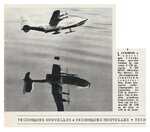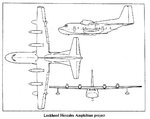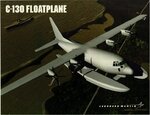Shortround6
Lieutenant General
In 1937 the proposed alternative was the Napier Dagger, which would have been interesting.
A bit like the supposed Chinese curse, "may you live in interesting times".
Follow along with the video below to see how to install our site as a web app on your home screen.
Note: This feature may not be available in some browsers.
Ad: This forum contains affiliate links to products on Amazon and eBay. More information in Terms and rules
In 1937 the proposed alternative was the Napier Dagger, which would have been interesting.
Maybe the Vulture was a possible alternative - prior to the war.
Even detuned, it would have provided a useful performance increase over the Hercules.
Mind you, the Vulture wasn't exactly high altitude rated ether.
I think that it is a bit difficult to categorise the Stirling as good or bad.
It started as a back up for the Supermarine heavy bomber and then became the last man standing.
The specification was extremely demanding for the time. I doubt that any aircraft could have met it. Supermarine claimed that theirs would but then, to paraphrase the lovely Mandy Rice Davies, they would wouldn't they.
From pictures of the mock up a small man could have stood up inside the wing root.
Maybe the Vulture was a possible alternative - prior to the war.
Even detuned, it would have provided a useful performance increase over the Hercules.
Mind you, the Vulture wasn't exactly high altitude rated ether.
For some reason the Vulture in published sources weighs 2450lbs which is just over double what the Peregrine weighed (I know it is not a double Peregrine) which is a bit strange as most "doubled" engines weigh a bit less.
I believe there was a proposal for an amphibious version of the C-130 out there. I don't think it was being actually expected to go anywhere, but was probably some IR&D project Lockheed put together when they were doing a bunch of Hercules variants: enlarged fuselage (larger cross section), twin-engined, VTOL, commercial passenger, etc.However, I CAN see that by changing the fuselage to a hull design, you could make a flying boat out of it ... but you could do the same with a Lancaster or Halifax, too, if you really wanted to do so. Hell, if you just HAD to, you could probably make a flying boat out of a C-130, too. It might look something like the Shin Meiwa US-1A.






The following link has a plan view that illustrates how extensive the wing bomb cells were. Note the the wing leading edges were torsion boxes that also served as fuel tanks, a similar arrangement to the later long range reconnaissance Spitfires. All in all a very innovative design. Note that it could carry 3 x 2000 lb bombs in the fuselage and 2 x 2000 lb bombs in each wing root.The Supermarine stuffed it's bombs in cells into those thick wings. A thinner 'Spitfire' wing would have needed a far bigger fuselage for a full size bomb bay.
Note that it could carry 3 x 2000 lb bombs in the fuselage and 2 x 2000 lb bombs in each wing root.
R J Mitchell and Supermarine: R. J. Mitchell's Bomber and his death.
It had to. The ability to carry seven 2,000lb SAP bombs was part of the specification.
Cheers
Steve
The large bomb bay would hold a lot of depth charges.I think the Stirling would have had a much better reputation had it been assigned to maritime patrol duties. Could it have been more useful? Yes: ASW patrol.
Could it carry as brace of torpedoes like the Wellington?As well as the short wingspan and short range, I think one of the Stirlings biggest handicaps was the structure of its bomb bay which would make it impossible to carry larger munitions.
The large bomb bay would hold a lot of depth charges.
Could it carry as brace of torpedoes like the Wellington?
Take out the nose gunner, replace it with a battery of forward firing cannons.